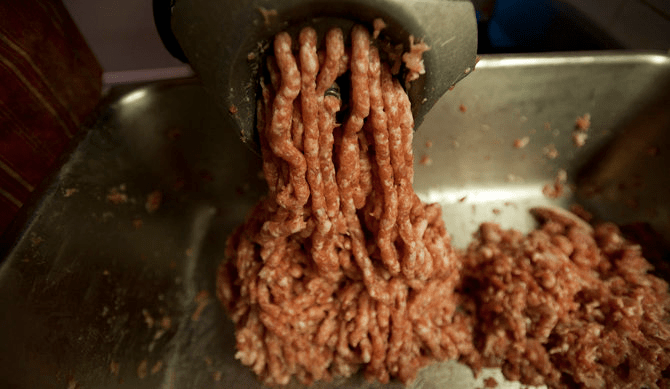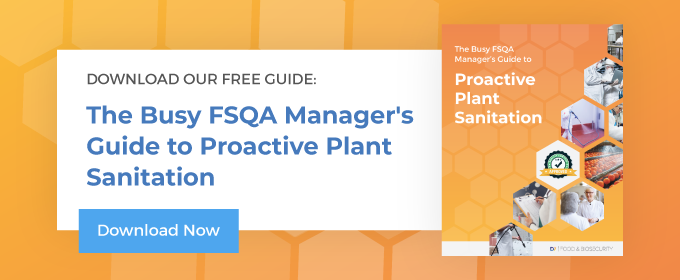
It’s every food processor’s worst nightmare: a recall. It happened in the beef industry in 2018, and it’s possible that consumers are still being impacted as they use products stored in freezers since purchasing.
Two major meat producers had multiple recall events1 for both salmonella and E. coli bacteria contamination. One company recalled more than 6.5 million pounds of ground beef in October and another 5.1 million pounds in December because of salmonella contamination. The USDA has said that more than 12.1 million pounds of beef were recalled, with multiple brands and hundreds of products being affected. According to the CDC,2 403 people in 30 states were affected by the outbreak, and of those, 117 were hospitalized. The CDC also estimates that for every one case of salmonella that is reported, another 30 are not reported, indicating that potentially more than 12,000 people were affected by the tainted beef.
There were also over 100,000 pounds of ground beef recalled3 in 2018 because of concerns about E. coli in the meat. In this case, each of the recalls was associated with two different production days, indicating two separate contamination events.
What Can We Learn from the 2018 Ground Beef Recall?
There were two different types of contamination events in 2018. In one, recalls were associated with ground beef produced and packed from July 26, 2018, to Sept. 7, 2018, a period of 44 days, whereas in the other case, recalls were related to two individual processing days. Not surprisingly, the amount of product that had to be recalled by the long-term contamination—12.1 million pounds—is dramatically higher than the amount of beef that was tainted in just two days of production.
The fact that contaminated beef was processed over the course of 44 days indicates that sanitation processes either were not happening at the right frequency, were not executed properly, or were not verified to confirm efficacy. Although the specific reasons for the outbreak have not been disclosed, there are several lessons food processors can learn from this event.
Test Products for Bacteria
Quality assurance processes that test food products for bacteria before they leave the facility will help protect consumers and reduce the chance of a recall. Because a number of testing protocols exist and continue to be developed, it is up to manufacturers to identify testing methods that provide fast results and enable high throughput of samples. The companies that invest in continual improvement of food testing technology will reduce the risk of releasing contaminated products.
Regularly Test Sanitation Processes for Efficacy
Food processed in a facility comes into contact with a broad range of surfaces and equipment parts. All of these, including the ones that are not seen, should be regularly sanitized to kill bacteria and destroy biofilms. Develop a sanitation program that includes both regular cleaning in the course of production and periodic deep sanitizing to eliminate biofilms and clean areas that are not easy to access. These regular sanitation protocols should include testing to verify that equipment and surfaces are free of bacteria and require additional sanitation if they do not pass the tests.
Use Preventive Sanitation Processes
The ideal scenario is one that does not involve fixing a bacteria problem, but preventing it before it even starts. Setting up sanitation protocols that prevent the growth of bacteria is one of the best ways to reduce the risk of a recall. Because every facility is different, preventive sanitation should be customized to account for the type of food being processed, the equipment that is used, and the most common types of bacteria. Although it may require an up-front investment, preventive sanitation is certainly more cost-effective than handling a recall that spans multiple states and could potentially harm thousands of consumers.
What Steps Can You Take?
The 2018 ground beef recalls impacted both consumers and the businesses that produced the contaminated products. Fortunately, we can learn from the mistakes that were made. If you want to avoid this type of issue in your food processing facility, a good first step is to review your cleaning and sanitation processes to identify areas for improvement. Ensure that sanitation standard operating procedures are available to sanitation crews and that they are being followed. Test equipment and surfaces after every sanitation process to ensure that it was effective. In addition to regular cleaning and sanitation, schedule periodic deep cleans to help combat biofilms and remove bacteria from areas that are not regularly sanitized.
If you’d like help developing a preventive protocol, this is exactly what the field technicians at Decon7 do. Schedule an initial consultation to review your sanitation processes and set up a preventive program, whether you have an existing bacteria problem or not.
1http://fortune.com/2018/12/04/ground-beef-recall-expansion-salmonella-fears
2https://www.cdc.gov/salmonella/newport-10-18/index.html
3http://fortune.com/2018/09/20/ground-beef-recalled-e-coli

